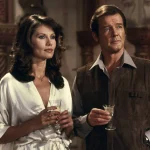Manhunter (1986)

Manhunter is a 1986 psychological thriller directed by Michael Mann, notable for its atmospheric storytelling and stylish cinematography. As the first film in what would become the iconic Hannibal Lecter franchise, it introduces audiences to the character of FBI profiler Will Graham, portrayed by William Petersen. The film is based on Thomas Harris’s novel Red Dragon, and it explores the intense psychological cat-and-mouse game between Graham and a notorious serial killer known as Francis Dolarhyde, played by Tom Noonan.
The plot follows Will Graham, who is called out of retirement to help the FBI catch Dolarhyde, who has been brutally murdering families. Graham’s unique profiling skills allow him to empathize with the killer, but this connection also puts him at great personal risk. As he delves deeper into the investigation, he seeks the assistance of Dr. Hannibal Lecter, a brilliant but incarcerated psychiatrist and cannibalistic killer, portrayed by Brian Cox. Their interactions are charged with tension, as Lecter provides insights into Dolarhyde’s psyche while manipulating Graham’s emotions.
Mann’s direction is characterized by a meticulous attention to detail and a strong visual style. The film employs a rich color palette and moody lighting to create a sense of unease, enhancing the psychological horror elements. The cinematography by Dante Spinotti is particularly noteworthy, using dramatic angles and slow-motion sequences to heighten the tension. The film’s pacing is deliberate, allowing viewers to immerse themselves in the characters’ psychological struggles while building suspense.

The performances in Manhunter are exceptional, with William Petersen delivering a nuanced portrayal of Will Graham. His character’s internal conflict and vulnerability are palpable, making him a relatable and compelling protagonist. Brian Cox’s portrayal of Hannibal Lecter is chilling and charismatic, laying the foundation for the character’s future portrayals in subsequent films. Noonan’s performance as Dolarhyde is equally striking; he captures the complexity of a deeply troubled individual, evoking both sympathy and fear.
The film’s score, composed by Michel Rubini and featuring contributions from the band The Reds, adds to the unsettling atmosphere. The music is haunting and atmospheric, perfectly complementing the film’s themes of obsession and madness. The use of sound design further enhances the tension, with moments of silence amplifying the emotional impact of key scenes.

Manhunter stands out not only as a thrilling crime drama but also as an exploration of the darker aspects of human nature. It delves into themes of identity, trauma, and the fine line between hunter and hunted. The film raises questions about morality and the psychological toll of violence, inviting viewers to reflect on the complexities of the human psyche.
Though Manhunter was not a commercial success upon its initial release, it has since gained a cult following and is considered a seminal work in the thriller genre. Its innovative approach to storytelling and character development has influenced numerous films and television series in the years since.

In conclusion, Manhunter is a masterfully crafted psychological thriller that combines strong performances, atmospheric visuals, and a haunting score to create a gripping narrative. Michael Mann’s direction and the film’s exploration of the human condition make it a standout entry in the crime genre. Its lasting impact is evident in the enduring popularity of the characters and themes introduced, solidifying Manhunter as a classic that continues to resonate with audiences today. With its intricate storytelling and psychological depth, the film remains a compelling examination of the nature of evil and the complexities of the human mind.











